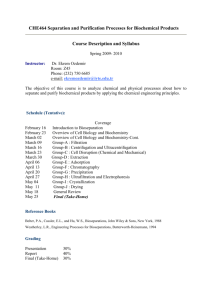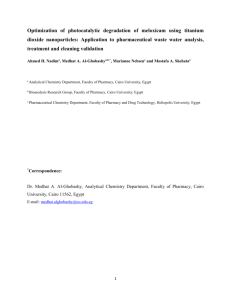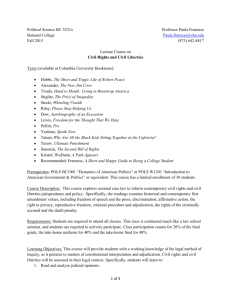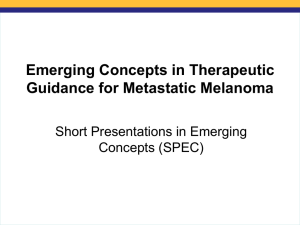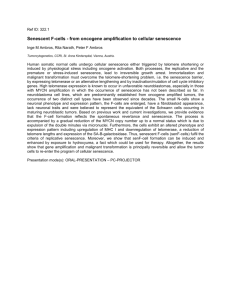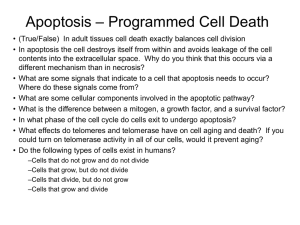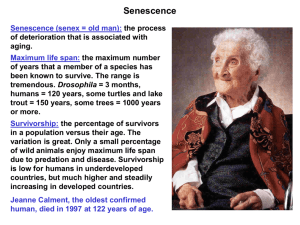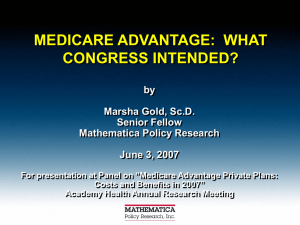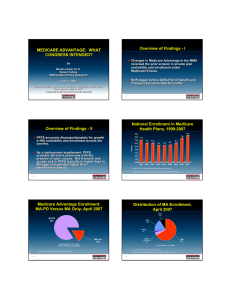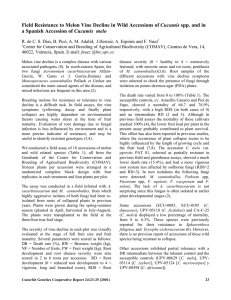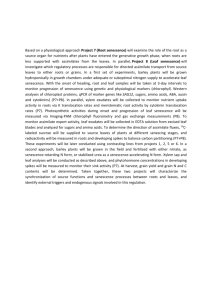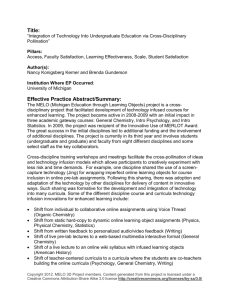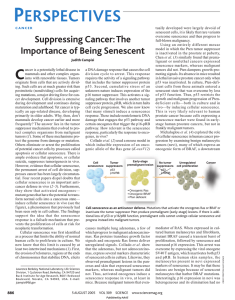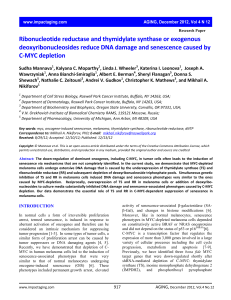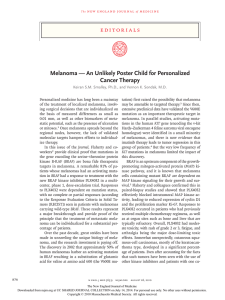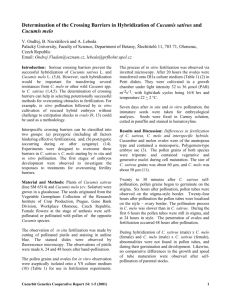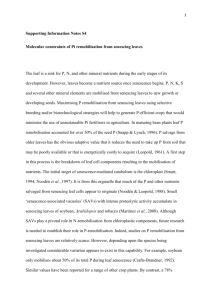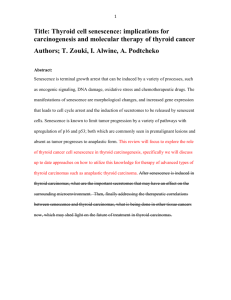BIO360: The Molecular Biology of Cancer
advertisement
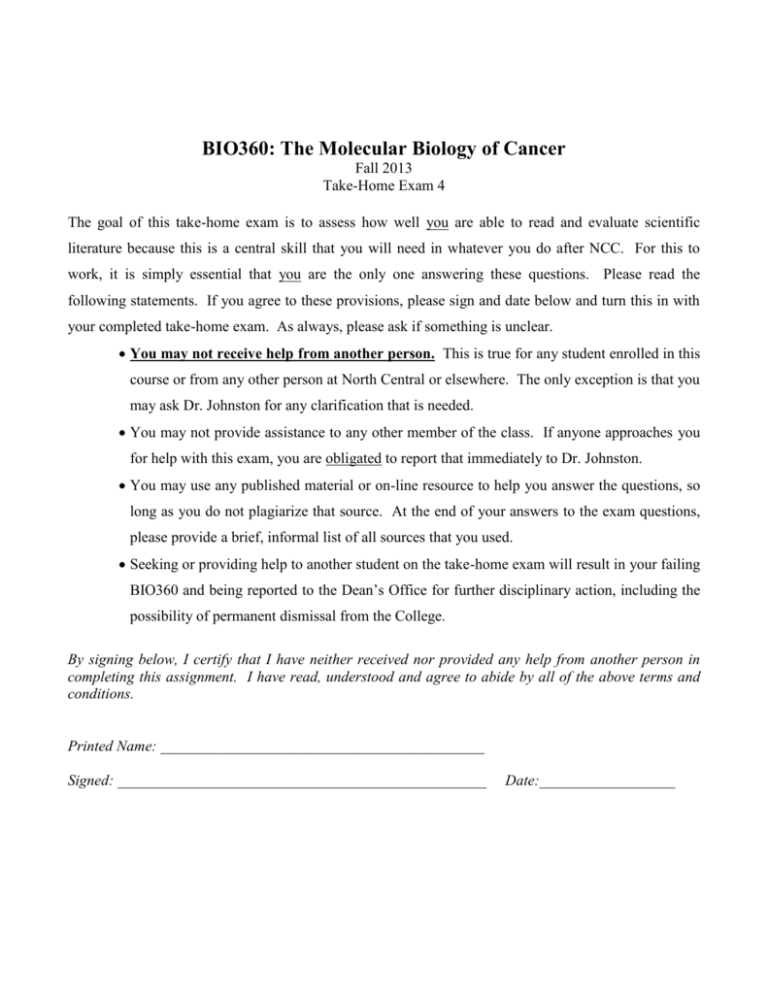
BIO360: The Molecular Biology of Cancer Fall 2013 Take-Home Exam 4 The goal of this take-home exam is to assess how well you are able to read and evaluate scientific literature because this is a central skill that you will need in whatever you do after NCC. For this to work, it is simply essential that you are the only one answering these questions. Please read the following statements. If you agree to these provisions, please sign and date below and turn this in with your completed take-home exam. As always, please ask if something is unclear. You may not receive help from another person. This is true for any student enrolled in this course or from any other person at North Central or elsewhere. The only exception is that you may ask Dr. Johnston for any clarification that is needed. You may not provide assistance to any other member of the class. If anyone approaches you for help with this exam, you are obligated to report that immediately to Dr. Johnston. You may use any published material or on-line resource to help you answer the questions, so long as you do not plagiarize that source. At the end of your answers to the exam questions, please provide a brief, informal list of all sources that you used. Seeking or providing help to another student on the take-home exam will result in your failing BIO360 and being reported to the Dean’s Office for further disciplinary action, including the possibility of permanent dismissal from the College. By signing below, I certify that I have neither received nor provided any help from another person in completing this assignment. I have read, understood and agree to abide by all of the above terms and conditions. Printed Name: ___________________________________________ Signed: _________________________________________________ Date:__________________ Read the following paper and answer the questions below. Wajapeyee, N., R.W. Serra, X. Zhu, M. Mahalingam, and M.R. Green. 2008. Oncogenic BRAF induces senescence and apoptosis through pathways mediated by the secreted protein IGFBP7. Cell. 132:363-374. Please type your answers. You are welcome to augment your written answers with hand-drawings if that helps explain your ideas. Don’t quote this paper or any other. Be sure to refer to specific data contained in this paper frequently to support your answers. Please put your name only on the signature page only and not on the paper itself. All answers are due at noon on Friday November 22. Email submissions are fine, but still must meet the same deadline. 1. Wajapeyee’s initial shRNA screen was conducted in primary foreskin fibroblasts (PFFs) and then confirmed in PFFs and melanocytes. Why was it important that they used PFFs instead of another cell line (such as SK-MEL-28 or many others) for their screen? (5 points) 2. What is the specific question that Wajapeyee et al. are asking in Figure 4B? (5 points) 3. The authors argue that IGFBP7 can activate either senescence or apoptosis. What other factor in the cell determines which pathway becomes activated? Where are the data showing that recombinant IGFBP7 lead to apoptosis? Where are the data showing that recombinant IGFBP7 lead to senescence? (5 points) 4. Consider the two graphs on the right side of Figure S9. Looking at the data, what question does Wajapeyee seem to be asking? What conclusion do you draw from those data? Looking at the Results section of the paper where they analyze these data, what conclusion do they reach? Do your conclusions agree or disagree? Why? (10 points) 5. Obviously, these scientists are thinking that IGFBP7 could potentially be a useful anti-cancer drug. If you are a clinical oncologist, what one critical thing would you want to know about your patient’s melanoma before deciding whether or not to treat it with IGFBP7? Please briefly explain, supporting your answer with data from the paper. (5 points) 6. As you may have noticed, this paper comes out of the same lab (Michael Green’s lab at the University of Massachusetts) that published the Fang et al. paper that we covered in class. Indeed, Fang et al. started looking at MEN1 in melanomas because of the shRNA screen that was presented in this publication. So let’s consider how IGFBP7 and MEN1 fit together in making a melanoma. The two papers generally measured different phenotypes which means that we may not always be able to make direct comparisons, but there are certainly places where we’ve got data for both genes. Figures 1, S1 and S2 show that IGFBP7 is needed for activated BRAF to inhibit proliferation and activate apoptosis in both PFFs and melanocytes. Is the same true for MEN1? After reading this paper, I believe that activation of BRAF leads to increased expression of MEN1 in an IGFBP7-dependent fashion. Do you agree? Why or why not? (10 points) 7. What else do you want to know? Good papers always tell us something new about the world which has the effect of raising new questions. Begin by putting forth a specific hypothesis or question. In your answer, list your hypothesis or question in one sentence and underline that sentence. Design an additional experiment or two that will significantly extend the results of Wajapeyee et al. Be original and don’t just re-state your answer to an earlier question on this exam. Be sure to explain the rationale behind your hypothesis, briefly outline an experiment or two and show why the new results will be important. Be very clear about your dependent and independent variables. In other words, what will you alter and how you will alter it? What will you measure and how will you measure it? In your answer, cite at least one primary research paper other than the papers that we have read as a class. (10 points)
